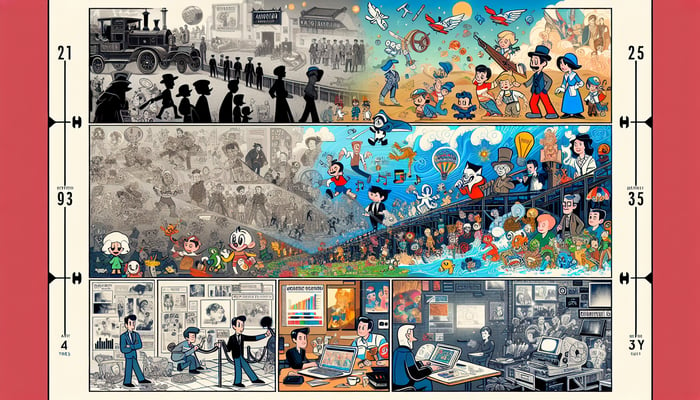Unraveling the Colorful Tapestry: A Brief History of Anime
If you've ever found yourself mesmerized by the vibrant landscapes and vivid characters of anime, you're not alone. Anime is a global phenomenon with deep roots and a rich history that continues to captivate audiences around the world. Whether you're a seasoned otaku or a newbie to the art form, understanding the journey of anime will only deepen your appreciation. Let’s dive into the fascinating history of anime.
The Origins and Early Beginnings
The word "anime" is derived from the English word "animation," but in Japan, it refers to all forms of animated media. The history of anime began in the early 1900s with an emerging industry influenced by Western animation styles. Early Japanese animation, mostly short films, started making their way into public consciousness in the 1920s and 1930s.
One of the first significant works was Namakura Gatana (The Dull Sword, 1917), attributed to Jun'ichi Kōuchi, which set the stage for the Japanese animation industry. These animations were often shown in theaters alongside live-action films.
Post-War Expansion and Innovation
The industry expanded rapidly after World War II, primarily due to famous directors like Osamu Tezuka, who is often hailed as the "God of Manga" and a pioneer in the field. In 1963, Tezuka's Astro Boy became the first anime series to air on television, breaking new ground and setting up a template for future series with its episodic structure and character development.
This era also saw the emergence of Tetsujin 28-go and Speed Racer, both of which contributed to anime becoming a staple in households across the world.
The Boom of the 1980s and 1990s
The 1980s and 1990s are often considered the golden age of anime, characterized by the advent of anime films and series with complex plots and captivating visuals. This era introduced groundbreaking works such as Akira (1988) and Ghost in the Shell (1995), both of which were pivotal in showcasing anime as a powerful storytelling medium.
The global appeal of anime grew exponentially during these decades, with series such as Dragon Ball, Sailor Moon, and Neon Genesis Evangelion capturing the hearts of international audiences and solidifying anime’s place in pop culture.
The Digital Era and Beyond
With the turn of the millennium, digital animation transformed the industry, allowing for more intricate designs and production techniques. Streaming platforms like Crunchyroll and Netflix have made accessing anime easier than ever, leading to its explosion in popularity across the globe.
Modern-day anime continues to push boundaries with series such as Attack on Titan and My Hero Academia, which incorporate high-quality animation and storytelling that appeal to both new fans and long-time enthusiasts.
Conclusion: The Ever-Evolving Landscape of Anime
Today, anime is an essential part of the global entertainment landscape, celebrated for its unique ability to blend art, culture, and storytelling. Its enduring appeal lies in its flexibility and diversity, offering something for everyone. From its humble beginnings to its current status as a worldwide cultural staple, anime’s history is a testament to the power of creative expression.
Whether you're customizing your favorite anime art on our products here at UtheHero or binge-watching the latest series, knowing the history enriches your understanding and connection to this magnificent art form.
